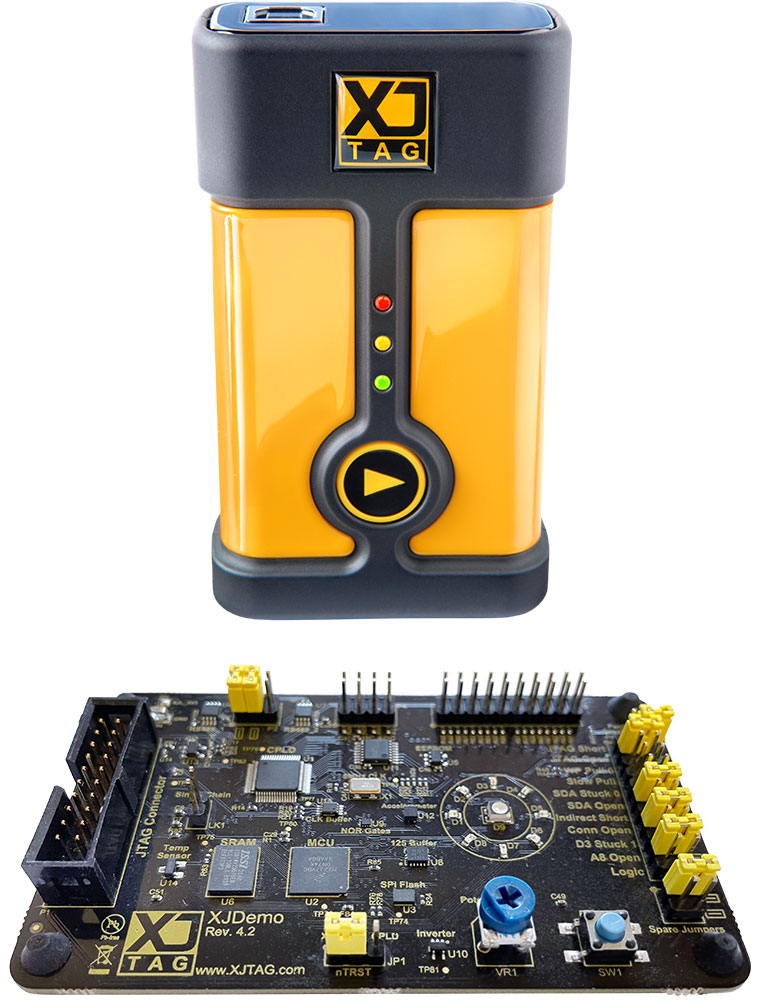
XJTAG Boundary Scan Simplifies and Accelerates All-Optical Network-Equipment Testing
Boundary scan can greatly simplify testing of densely populated boards, and quickly verify components and connections without booting-up or physically probing. The XJTAG tester goes further by making boundary scan easy to understand and use, and is the system preferred by Polatis for testing its advanced all-optical network routing switches.
Polatis enables the telecom and data-center industries to deliver faster services and boost business performance, by producing advanced all-optical switches that support seamless high-speed infrastructures. Innovative technologies like patented DirectLight® beam-steering and Variable Optical Attenuation (VOA) make Polatis switches the first choice for superior speed, reliability and efficiency.
Design, development and initial production is handled at the company’s center in Cambridge, UK, while high-volume production happens in Krakow, Poland. Because the complex boards are densely populated with high-performance ICs in I/O-rich packages, such as BGA for DSP, FPGA, flash and SDRAM devices, many connections cannot be accessed directly for testing with conventional probes. Polatis engineers have therefore chosen the XJTAG boundary scan system to help maximize test coverage and reduce cycle times.
Sean Barker, Hardware Team Leader, says XJTAG is easy to use, and enables high-precision fault isolation. “XJTAG’s easy usability enabled us to introduce boundary scan to our test regime and become proficient users very quickly.”
He also cites speed and efficiency among key strengths of XJTAG boundary scan. “The test duration per board is less than one minute. XJTAG has helped us achieve our targets for improving both productivity and build quality.”
XJTAG has versatile features that help users develop tests quickly and save time by re-using proven test scripts. Features include the advanced Connection Test, which tests a high proportion of a circuit using its own knowledge of the components on the board, as well as powerful features for testing non-JTAG devices. The XJEase high-level test description language allows users to step through code and use breakpoints to aid analysis, while the included library of editable device files helps accelerate test generation. Getting started is also quick and easy, without having to spend time calculating test vectors to exercise non-JTAG devices.
Polatis is using XJTAG to assist development, prototyping and production activities. The production boards are tested efficiently using XJRunner, the cost-effective run-time environment for performing proven boundary scan tests on the production line. XJRunner supports in-system programming, and includes layout and schematic viewers to help quickly pinpoint and fix any defects that are found. The system logs all test output including serial numbers, thereby supporting traceability, and provides statistics including fault trend analysis. XJTAG’s dedicated repair and rework application XJInvestigator gives an extra boost to production testing. It has extra diagnostic features such as the ability to perform ad hoc testing by controlling device pins directly, and full JTAG chain debugging capabilities.
Choosing XJTAG has delivered excellent results for Sean Barker and his team at Polatis. Production performance has increased, resulting in higher productivity, and the development environment allows high test coverage with minimal impact on board design. He concludes, “XJTAG has helped us overcome barriers to testing our highly integrated, complex and dense boards. Its speed, versatility and ease of use give us the power to keep extending our leadership in telecom and data services equipment markets.”

XJTAG’s easy usability enabled us to introduce boundary scan to our test regime and become proficient users very quickly.
The test duration per board is less than one minute. XJTAG has helped us achieve our targets for improving both productivity and build quality.
XJTAG has helped us overcome barriers to testing our highly integrated, complex and dense boards. Its speed, versatility and ease of use give us the power to keep extending our leadership in telecom and data-services equipment markets.

Company: Polatis Inc.
HQ USA
Nature of business:
Worldwide leader in all optical switch technology
Main products:
Innovative new solutions for modern fiber-based networks
Customers:
Telecoms, Datacenters and Secure Networks/Defense markets
Founded: 2000
Employees: 110 worldwide
Revenues: $13 million turnover (2015)
Locations: Headquarters in Andover, MA, USA; Cambridge, UK and Poland
Web site: www.polatis.com

Configure your products














